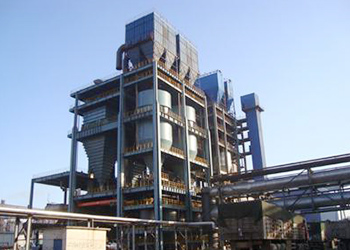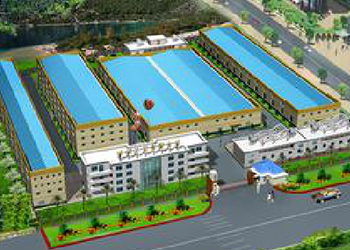Summary of the five major scientific and technological achievements of global energy saving and emission reduction in 2014
11-03-2020
With the development of the energy-saving and environmental protection industry, global companies are constantly innovating technologies, striving for the maximum utilization of energy, and improving energy-saving technologies. The following is a summary of recent domestic and foreign technologies.
Hunan built the first domestic hydrogen peroxide production propylene oxide plant
Sinopec’s “Ten Dragons” key research project and the first domestically developed hydrogen peroxide production propylene oxide plant were completed in Hunan Changling Refining & Chemical Corporation. The designed production capacity of the project is 100,000 tons per year. After it is put into production, it is expected to generate sales revenue of over 1.1 billion yuan per year.
Propylene oxide is widely used in chemical, pesticide, textile, daily chemical and other industries, and is an important basic chemical raw material. The direct oxidation of hydrogen peroxide to propylene oxide is an emerging clean production process. Compared with traditional processes such as the chlorohydrin process, it has the advantages of low energy consumption and less pollution, and basically no industrial sewage discharge.
In the case of a few foreign companies implementing technology monopoly and the difficulty of introducing technology, Changling Refinery and Petrochemical Research Institute, Hunan Changling Petrochemical Technology Development Co., Ltd., Sinopec Shanghai Engineering Co., Ltd., and Qingdao Safety Engineering Research Institute have successfully cooperated Independently developed this process, breaking the foreign monopoly on this green environmental protection technology. In 2010, the process stepped out of the design room to start industrial trials. The results showed that various technical indicators met the design requirements, and some indicators were ahead of the international level; in 2012, the technology was reviewed and passed by the Sinopec Corporation and entered the trial production stage. In January 2013, Changling Refining & Chemical started construction of a 100,000-ton/year hydrogen peroxide production propylene oxide plant. The project management department makes scientific coordination, formulates strict safety management and guarantee systems, and standardizes procedural construction. In the case of multiple changes in project design, tight equipment ordering time, and difficulty in construction coordination, there is no record of obtaining millions of labor hours for safe construction Good results for the event.
German standard passive energy-saving houses settled in Jinan
Recently, three pilot projects of passive ultra-low energy consumption buildings (passive houses) built according to German standards have settled in Jinan. The three pilot projects established by Jinan this time are the Disaster Prevention and Hazard Avoidance Command Center of Quancheng Park, a teaching experiment center of Shandong Jianzhu University, and a teaching project of Shandong Urban Construction College. The three projects will be mainly based on the German Passive House construction standards as required. At the same time, there are eight other pilot projects in the province, and these 11 projects will receive a subsidy of 60 million yuan from the provincial finance.
Mentioned that "no heating and air conditioning can be maintained at a suitable temperature", many people in the industry should remember the slogan "Farewell to the air conditioning and heating era". As early as 2002, the Fengshang International Apartment built by Beijing Fengshang Real Estate in the Wanliu area of Haidian took the lead in proposing "Farewell to the Air-conditioning and Heating Era", becoming the first domestic application of European high-comfort, low-energy environmental protection optimization design theory to design and build. An apartment-style residential building, which mainly uses five major systems: concrete heating and cooling system, healthy fresh air system, external wall system, external window system and roof system to create ecological apartments to realize the recycling and use of renewable resources under the premise of high living comfort. Low energy consumption.
Such benchmark energy-saving buildings once produced a huge wave in the domestic real estate industry. Since then, low-energy buildings have begun to enter people's vision. However, for more than ten years, there have been few reports on zero-energy, passive buildings in China, but the specific implementation is like holding a pipa and half covering your face, which is somewhat beyond reach.
The so-called "passive" house does not need to use air conditioning and heating to adjust the room temperature to achieve the effect of moderate cooling and heating. In our country’s thousands of years of construction history, the ancestors digging holes and living in nests are essentially primitive passive houses.
Different from traditional projects, in order to achieve excellent thermal insulation performance and airtight performance, Passive House projects adopt different construction methods from traditional construction projects. In terms of insulation layer, the current general project, the insulation layer is only 5 cm, while the insulation layer of the passive house is as thick as 20-25 cm. Another example is to install a solar water heater bracket, which must be fixed with two layers of insulation boards under the bracket to prevent heat loss. The glass windows are all specially made three-layer windows, even the sockets installed on the walls of the room, and they must be treated with special treatment to strengthen heat preservation and airtightness. With various new technology applications, this type of passive house can save more than 90% of energy compared with common construction projects.
Boston Battery: Promote the development of new energy buses with "space quality"
In the first half of last year, Boston Battery, a global leader in new energy ternary lithium battery technology, has begun bus battery testing in Hohhot in Inner Mongolia and Xiangfan in Hubei. In the field test, the related battery products in Boston have experienced the extreme heat and cold test of -20℃-34℃. According to an internal report from Boston Battery, the bus test in Hohhot, Inner Mongolia, has gone through the summer and winter seasons. The driving range on a single charge reaches 280 kilometers in summer (SOC: 99%~25%) and 258 kilometers in winter. (SOC: 95%~30%), fully meet the needs of urban public transport in terms of capacity, and regardless of driving in any environment, the battery cell voltage difference never exceeds 100mV, showing great stability and superiority. During the battery pack test in Xiangfan, after normal driving for more than 14,000 kilometers, the staff of the bus company opened the battery box and found that there was still no pollution inside the battery box. Boston batteries also performed well in terms of sealing and protection measures.
The Boston battery also successfully passed NASA's space test recently. According to the test report, the Boston battery has reached "aerospace quality" in terms of its charge and discharge, shock resistance, and battery safety and airtight design in its complex and harsh simulated space environment, which is eye-catching. Because NASA's selection of batteries includes extreme safety, strict quality control, and consistency in battery production. In the testing phase, NASA randomly selected a certain number of batteries on the production line for testing. Boston batteries were recognized for their excellent consistency.
German industry giants join forces to start rapid charging pile network construction
In order to promote the development of electric transportation, a comprehensive network of charging stations will be built along the metropolis and transportation routes. BMW, Daimler, Porsche, Volkswagen and the German energy supply company EnBW, German cooperative publishing house and two German universities Jointly launched a major project called "SLAM-Fast Charging Pile Network".
Within the framework of this project, 400 AC and DC fast charging piles are planned to be built by 2017. The specific target is that the charging capacity will reach 80% of the storage capacity within half an hour, and all vehicles with European standard connectors CCS can be used. As a pilot, the company will invest in at least 20 fast charging piles around the relevant banks before the end of September this year to test its recognition.
Japanese farmers grow vegetables and "plant" electricity income increased by 10 times
In general, there are scarecrows in the fields to drive away birds, but in a 750 square meter vegetable garden in Ichihara City, Chiba Prefecture, Kanto Region, Honshu, Japan, what you see is a completely different scene: a field stands between the fields. The neat rows of brackets are lined with lead-grey plates with gaps, but they are not used to drive away birds. Take a closer look and you will find that they are all solar panels. 348 solar panels have been installed in this 750 square meter farmland. They are mounted on pipes, 3 meters above the ground, and 5 meters apart between each row. In order to generate electricity as much as possible, the solar panels can also adjust their angles according to seasonal changes. For example, in winter and summer, the angle of the solar panels facing the sun can be adjusted to 40 degrees and 25 degrees respectively.







 LinkedIn
LinkedIn Twitter
Twitter Facebook
Facebook Instagram
Instagram YouTube
YouTube